Marking of electrical wires and cables - what you need to know to select?

The entire modern world is shrouded in wires. In houses, along the walls, on roofs, on lanterns, lighting, high-voltage wires are laid underground. The cord of the iron, vacuum cleaner, coffee maker, washing machine, computer, TV, refrigerator is pulled to the outlet to connect the power. The high-voltage line, through the deserted taiga, carries electricity to the cities from hydroelectric power plants from Siberian rivers.
Labeling cables and wires for an inexperienced customer can be confusing. The cables and wires are marked in a specific way so that you can easily choose among different types of products. The letters mean: what is the wire for, where it will run, what metal is the central core made of, what is the insulation from, what power is calculated for. To avoid fires, the electrical wire or cable must be selected correctly. We will tell you how to read wire brands in this article.
Content
What are the wires
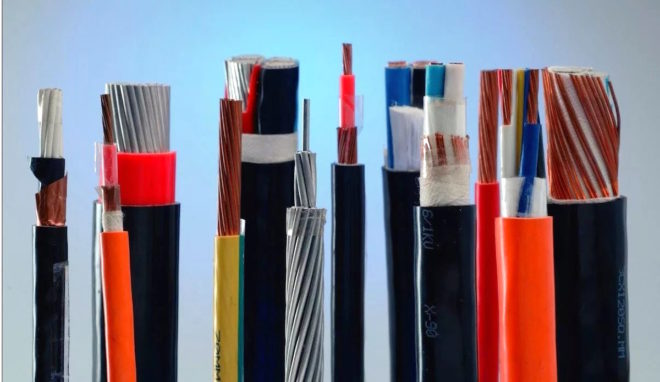
Today, telephone calls, all kinds of information, industrial-sized and household electricity are transmitted via wires. Depending on what kind of work the wire does, it differs in different metal and core diameter, number of cores, insulation, and special qualities. In places of increased fire hazard, for example, cables or cords are laid with insulation that does not burn well. All these nuances have a certain designation in the form of letters and numbers indicated on the insulation of electrical wires.
Wire marking decoding is a short listing of product specifications. Each letter of the marking indicates:
- the metal from which the central conductors are made, which directly transmit electric current;
- the place where this product is used;
- insulation material and common shells, additional protection;
- degree of flexibility, fire resistance, self-extinguishing ability, low smoke emission, no combustion sustainability;
- type of construction, number of cores;
- total cross-sectional area of wires, cores;
- the optimal voltage that the product can withstand in operating mode.
Product groups
For electrical wiring today, cables, ordinary wires and household cords are used. These are three main groups into which electrical products can be conventionally divided. Depending on the purpose, they are made with a different number of cores and a cross-section of the electrically conductive core, they are insulated in different ways. For example, if you decide to install a fountain in a summer cottage, the cable laid under the water must be insulated in a special way.
The wire
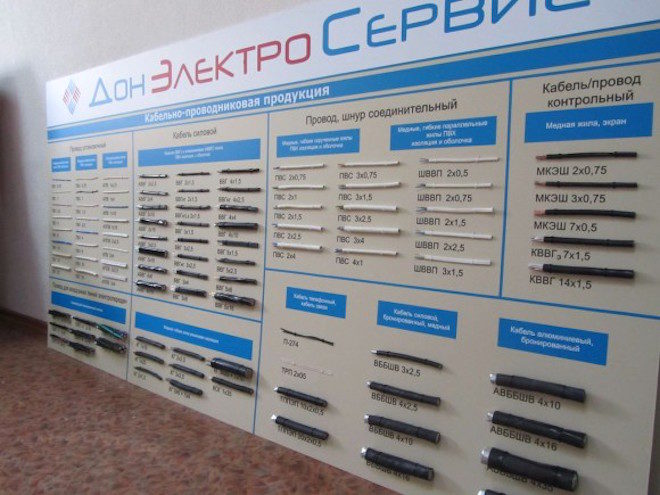
One or a few wires without insulation, or with a thin insulating film, is called a wire. Some experts simply call them residential. Wire insulation is usually lightweight, not metallic. This is a varnish, polyvinyl chloride. The vein insulated with varnish is used for winding transformers, motors.
A two-core wire with PVC insulation is laid when installing household electrical wiring in apartment buildings, in the country, in wooden buildings, country cottages.
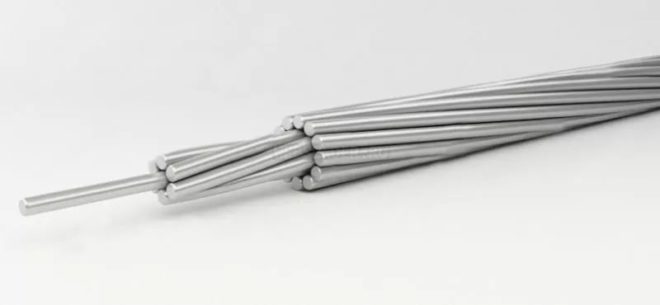
Wires are produced mainly with copper and aluminum cores. Although there are veins made of steel and other expensive alloys. A wire with copper cores is more expensive than aluminum, but is capable of passing a current of higher values. This provides better fire safety because the wire does not heat up. What to consider when making electricity wiring in a wooden structure.Copper conductors can bend more without breaking than aluminum conductors.
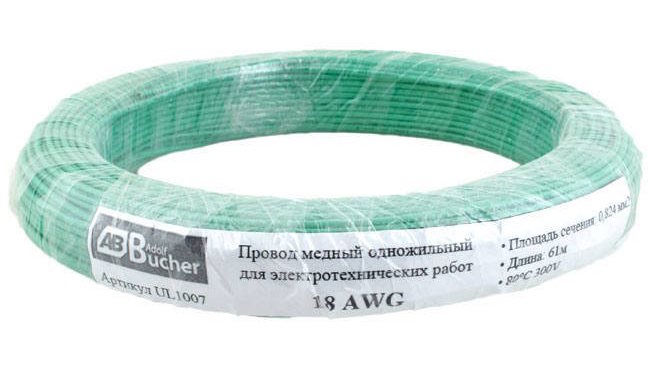
Although aluminum wires are cheaper, they are more fragile, so they are sold and used less and less. Copper and aluminum oxidize outdoors. Therefore, the connections should be made through terminals or well insulated, tinned, varnished.
Contacts are insulated and bare. The open view is used on trolleybus wires. The insulated wire is made protected and without additional protection, it is a layer of plastic, rubber, for example, for laying in a damp room, such as a bathhouse.
Also, wires are divided into power, installation, installation. Mounting - copper, laid in electrical panels. Hook-up wires connect parts in different devices. Power and installation are used outdoors and indoors. Products under a voltage of 220 volts are called power wires, they are laid in any home from sockets to light bulbs and household appliances.
Cable

This is a product made of solid or stranded insulated wires, covered with a common sheath made of plastic, rubber, vinyl. The cable can be covered with armor to protect it from vandals, this is indicated in the cipher applied to the insulation.
The cable, in turn, happens:
- control;
- power;
- analog;
- telephone;
- radio.
The power cable transmits electricity to distribution boards and lighting fixtures, water supply pumps. It is laid outdoors, by air and underground, as well as inside private and industrial buildings. Such a product comes with an aluminum core and copper. Today, the copper version is more often used. The insulating layer is made of rubber, vinyl, various polyethylene.
The control cable is capable of transmitting an information signal to control various devices. This cable can also be copper or aluminum.
An analog cable is used in various automation networks, usually a copper wire with a protective sheath. The braided shield protects the information signal from various pickups.
Cords
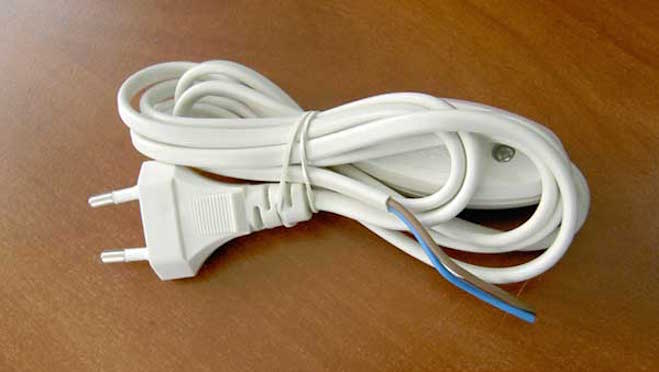
In everyday life, cords are called two-core and multicore wires, which connect electrical appliances, lighting bulbs to a 220 V power supply, 50 Hz. A two-core wire is used where there is no need to mount a special grounding. Today, cords with a euro-plug include refrigerators, irons, hair dryers, microwave ovens, washing machines, electric kettles, and coffee machines. Various extension cords are also constructed from cords that can withstand heavy loads from multiple household appliances. They are best made of three copper conductors, flexible and capable of carrying a high current.
How to decipher the marking of domestic manufacturers
Each person, intending to purchase wires, cables, is faced with a difficult choice problem. This is because the wire markings on the insulation look like a cipher. Knowing what the letters and numbers that are indicated on the insulation of electrical products mean, you can easily go to the store and buy the product you need.

Let's consider examples of marking, with decoding, so that you can buy products for wiring that meet the specifications. Old wiring today cannot cope with the connection of new household equipment.
Power cables are marked as follows:
- A - this letter tells about what metal the conductive core is made of. If you see the letter A in the first place of the marking code, then the current carrying wire is made of aluminum. When a conductor is made of electrical copper, there will be no letter in the first place;
- АА - in the first two positions informs the buyer - an aluminum core in an aluminum sheath;
- B - informs about the presence of armor made of 2 steel plates with anti-corrosion protection;
- Bng - armored, does not burn;
- B - the symbol can be indicated in the first position, it claims to be insulated with polyvinyl chloride;
- B - the symbol may be in the second position, it informs in this case about the presence of a second layer of polyvinyl chloride in the cable;
- Г - the symbol can be indicated at the end of the letter part of the cipher, it indicates that the wire is bare, without additional protection;
- K - the letter informs that the cable armor is made of round steel wire. At the summer cottage, rabbits and other wild animals can gnaw the wiring, for this there are cables covered with armor;
- Shv - the presence of a pressurized PVC hose on the armor;
- Шп - a layer of a pressurized hose on the armor, made of polyethylene;
- Р - rubber layer;
- НР - rubber, does not burn;
- Ps - self-extinguishing polyethylene, which is important in places hazardous to fire;
- PV - vulcanized polyethylene;
- ng - symbols that indicate that the cable does not burn itself and does not support burning in the group;
- LS - Low Smoke - emits little smoke;
- ng - LS - does not burn, does not emit smoke;
- FR - increased resistance to fire, the presence of a mica plate;
- FRLS - low smoke, fire resistant;
- W - sometimes there is such a marking, meaning a cord.
It should be noted that only the first letter A indicates the metal of the core. If it is not in the marking, then the core is made of copper. All other letters denote the material of insulation, protective shells and their properties, such as resistance to fire, the ability to self-extinguish, and does not emit a large amount of toxic smoke. If such a cable is laid in a group of others, it does not support combustion. This is indicated in the marking code in small letters ng.
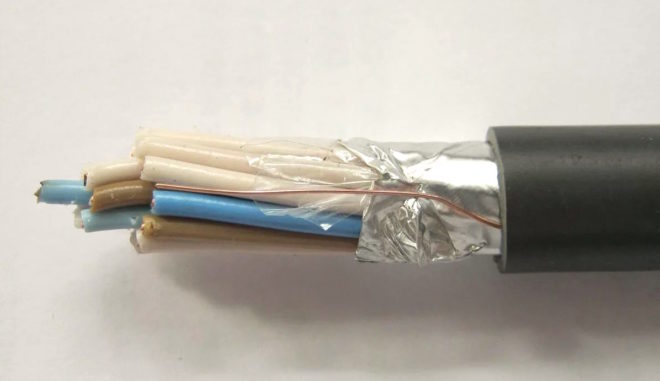
The control cable is marked as follows:
- A - the symbol placed in the first position claims that the core is aluminum, when A is passed, the wire is copper;
- B - in the second position, without A - in the first, indicates that the insulation is PVC;
- B - in the third position, when there is no A - in the second, it speaks of an additional layer of PVC;
- P - polyethylene;
- Ps - self-extinguishing polyethylene;
- D - no additional protection;
- P - rubber.
All symbols except A indicate layers of protection. Where there is high dampness and temperature, for example, in a bath, protection is needed from rubber, self-extinguishing polyethylene.

Installation-specific markings:
- M - in the first position, denotes an assembly wire;
- G - many wires, if there is no symbol, one wire;
- B - PVC;
- PV-1, PV-3 - PVC layer, numbers 1 and 3 indicate the degree of flexibility;
- PVA - PVC, wire for connection;
- ШВВП - flat cord, two layers of vinyl;
- PUNP - flat wagon wire;
- PUGNP - flat wagon wires, high flexibility. They are laid indoors, for household equipment and street lamps.
Popular markings
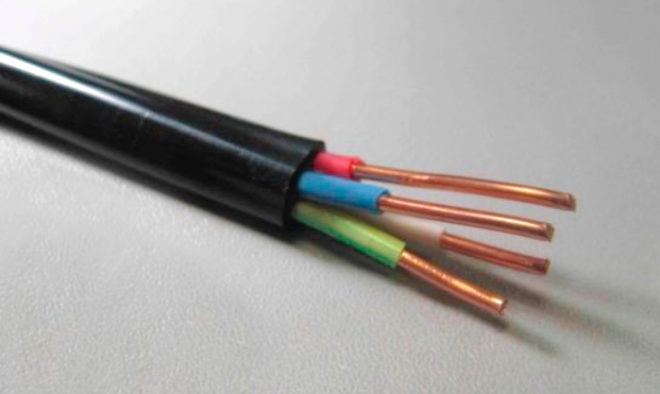
A popular type of cable - VVG - reads: Vinyl, Vinyl, Naked. If we consider all the letters in more detail, it turns out:
_ the first character is missing, it means the core is made of electrical copper.
B - the insulation of each core is made of PVC.
B - all the veins are also surrounded by a common dense polyvinyl chloride layer.
G - naked, that is, there is no armor on top of the common shell - an anti-vandal rigid structure.
The VVG cable has from one to five current-carrying parts. It may have a zero core or be absent.
If the cable is marked VVGng, this means that this subspecies of the product does not support the spread of fire. This quality is important for places with increased fire hazard.
More complete marking: VVGng cable - 0.66 kV 3 * 1.5. Copper product, of three cores, each with a cross section of 1.5 mm2. Each is in PVC insulation (the first character is B), the general shell is also vinyl (the second character is B), there is no armor (letter D), does not support combustion, being in a group (letters ng).
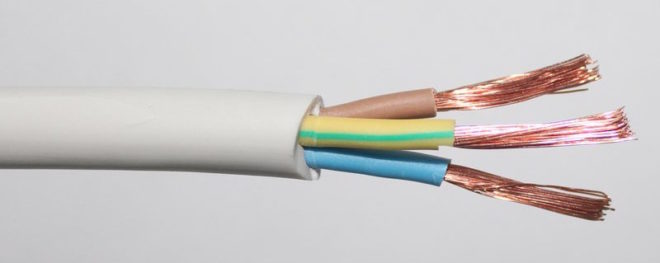
Copper cable PVA is often bought for the installation of electrical wiring in private houses, for various equipment in the country, for connecting any kitchen appliances and machines to the network.
PVA marking stands for: copper wire, connecting, with PVC insulation. Such a wire is made of 2-5 copper, twisted, separately covered with PVC, cores, with different cross-sections (0.5-22 mm2).

The wires on the poles are designated as follows:
- SIP-1 - self-supporting insulated with cross-linked polyethylene wire with non-insulated zero;
- SIP-2 - the zero core is isolated;
- SIP-4 - insulated conductors with the same cross-section.
NYM wires - made according to German norms of Normenleitung cables, in PVC (Y), used in installation for various purposes. VDE symbols guarantee trouble-free operation in rooms with high temperatures, fire-hazardous places.
KG - flexible cable is produced with copper round conductors, from one to five, with a wide range of cross-section: from 1 to 185 mm2. The core insulation consists of rubber based on natural rubber (RTI-1). General sheath - hose rubber RShT-2 or RShTM-2 made of synthetic rubber (isoprene, butadiene).
Foreign manufacturers
If you see Latin letters in the cipher on the insulation, then the product is of a foreign company.
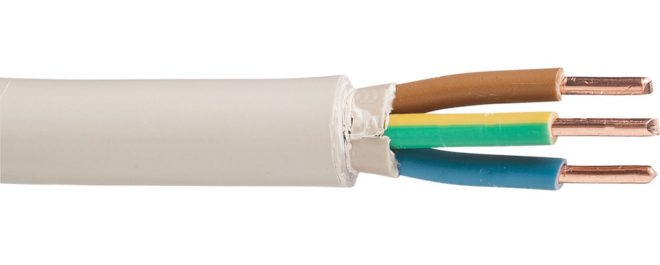
Their power cables are designated as follows:
- N - manufactured according to the VDE regulations of the German Electricians Association;
- Y - in our opinion - vinyl;
- H - no dangerous inclusions such as halogens;
- M - conductor for installation.
For control:
- Y - insulated with vinyl;
- SL - for control;
- Li - many veins made according to VDE.
For installation:
- H - HAR approved;
- N - meets the standards of the manufacturer's country;
- 05 - maximum allowable U = 500 V;
- 07 - maximum allowable U = 750 V;
- V - insulated with vinyl;
- K - the core bends well, it is recommended for installation work.
Foreign markings differ little from domestic ones, but symbols in it may be arranged differently, be careful, consult with specialists.
conclusions
If you decide to mount the electrical wiring in your house yourself, make the correct calculation so that the load does not exceed the permissible value. Keep in mind that in the future you can purchase a new refrigerator, washing machine, dishwasher, toaster, double boiler, multicooker, electric oven and other helpers around the house, with a powerful consumption of electricity. The wiring for lighting lamps can be made from simple two-wire wires. The automatic washing machine must be connected directly from the switchboard, with a separate cable, designed for high amperage, through an emergency disconnect device, with mandatory grounding.
Then decide on the place of laying, outline the path, measuring the total length. Buy the cable only from certified sellers, taking into account the number of phases, the calculated cross-section, the method of laying. Go to the store with a caliper to clarify the thickness of the cores and protective sheaths. Foreign manufacturers often make cores with a low cross-section.




